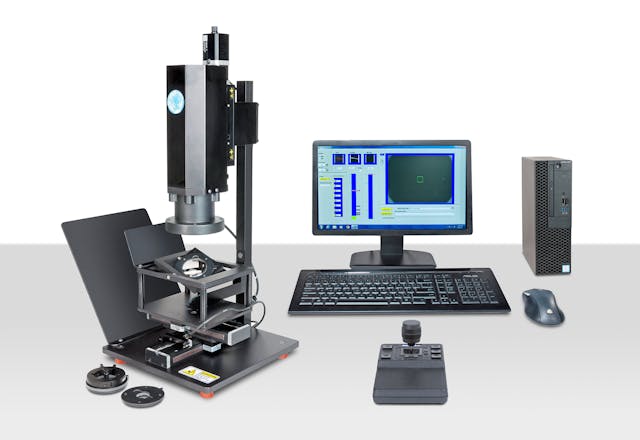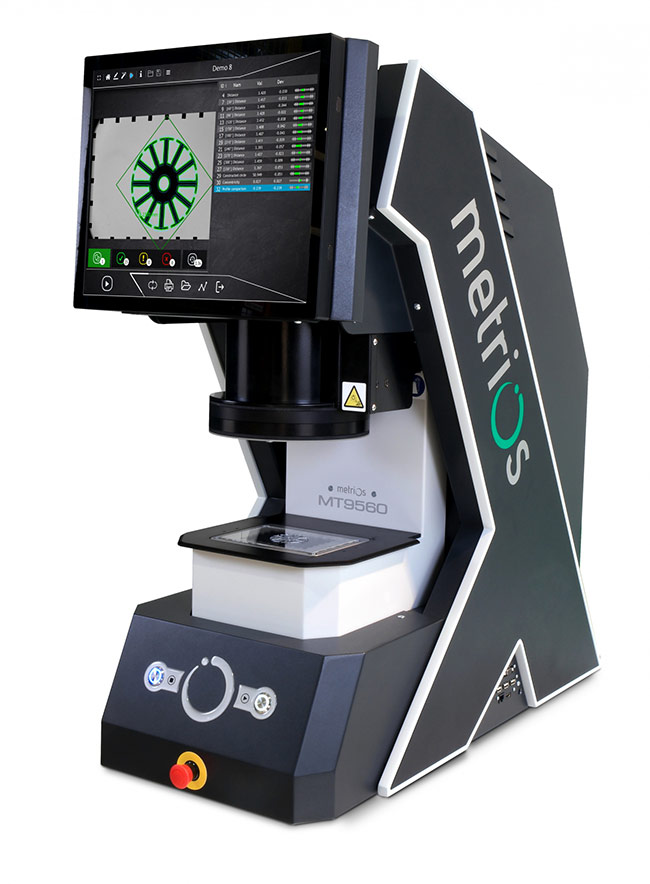Quick guide for successfully setting up an optical measurement system in a production environment
Quick guide for successfully setting up an optical measurement system in a production environment
Blog Article
Recognizing Just How Optical Measurement Solution Enhance Top Quality Control Processes
When you're looking to boost quality assurance procedures, recognizing optical measurement systems is vital. These modern technologies provide exact, non-contact dimensions that can change your inspection techniques. By leveraging sophisticated strategies, you can streamline operations and reduce errors. How precisely do these systems integrate into existing workflows, and what benefits do they bring? Let's explore the key elements that make optical dimension a game-changer in top quality management.

The Basics of Optical Measurement Equipments
Optical measurement systems play a vital duty in assuring product quality across numerous sectors. These systems use light-based technologies to gather specific information regarding physical characteristics, such as dimensions, surface area finish, and shade. By using sensing units, cams, and lasers, you can achieve non-contact dimensions that reduce the risk of destructive delicate products.
Recognizing the basics of these systems is fundamental for efficient quality control. They operate principles like reflection, diffraction, and refraction, permitting you to examine numerous materials and forms. The accuracy and rate of optical dimensions enable real-time surveillance, which helps you recognize problems early in the manufacturing process.
Additionally, these systems can be integrated with software application for boosted data analysis, developing a complete quality administration strategy. By leveraging optical measurement systems, you not only enhance productivity however additionally guarantee your products satisfy stringent high quality criteria, inevitably enhancing client contentment.
Sorts Of Optical Measurement Technologies
Countless kinds of optical measurement modern technologies are readily available, each developed to satisfy details requirements in quality control. You may run into laser triangulation, which gauges distance by analyzing the angle of a shown laser beam of light. This innovation is excellent for capturing precise dimensions in 3D area.
An additional alternative is structured light, where you forecast a collection of light patterns onto a surface to create a comprehensive 3D design. This technique works well for complicated geometries.
Then there's interferometry, which can find minute adjustments in surface area accounts by examining the disturbance patterns of light waves. This is particularly beneficial for applications needing nanometer precision.
You may also consider optical coherence tomography, which provides high-resolution pictures of inner attributes without damaging the object. Each technology serves various demands, so choosing the best one is vital for accomplishing highest quality control outcomes.
Trick Benefits of Optical Dimension in Quality Assurance
When it pertains to quality control, leveraging optical measurement modern technologies can substantially boost accuracy and efficiency. These systems permit you to catch comprehensive dimensions swiftly, minimizing the time required for evaluations. You'll notice that optical dimensions can recognize also the tiniest issues that may go unnoticed with typical techniques, ensuring item consistency.
Furthermore, using optical dimension systems frequently leads to minimized waste and rework, as you catch concerns early in the production procedure. You'll also value the non-contact nature of many optical techniques, which decreases damage to fragile parts during analysis. This flexibility enables a more comprehensive variety of applications throughout various materials.
With real-time information collection, you can make enlightened choices quickly, simplifying your quality control procedures (optical measurement systems). Ultimately, including optical dimension into your quality assurance approach not only improves performance but also improves consumer satisfaction by providing higher-quality items consistently
How Optical Measurement Solution Improve Precision and Accuracy
Optical dimension systems boost accuracy and precision by improving measurement resolution, enabling you to identify also the smallest variations. With real-time data analysis, you can make immediate adjustments and decisions, ensuring your processes stay on track. This combination not only enhances item top quality yet also improves your top quality control initiatives.
Boosted Dimension Resolution
By leveraging sophisticated technologies, optical dimension systems greatly improve measurement resolution, leading to enhanced precision and precision in top quality control. You'll observe a significant difference in the quality of measurements, permitting you to determine also the smallest inconsistencies from specifications. Ultimately, improved dimension resolution not only improves item quality yet also enhances source utilization, making sure that you fulfill customer expectations continually.
Real-Time Data Analysis
Although standard dimension systems frequently depend on postponed information processing, real-time data analysis in optical measurement systems reinvents the means you monitor high quality. By supplying prompt feedback, these systems enable you to spot deviations and inconsistencies as they occur, allowing for quick rehabilitative activities. You'll experience better accuracy since you can instantaneously contrast dimensions versus predefined criteria. This removes uncertainty and minimizes the threat of issues sliding via. In addition, real-time information aids you gather beneficial insights with time, adjust your quality assurance procedures. With this cutting-edge modern technology, you'll boost both accuracy and effectiveness, making sure that your items regularly meet high standards. Embrace real-time evaluation, and enjoy your quality assurance efforts soar to new elevations.
Integrating Optical Dimension Into Existing Quality Control Processes
Incorporating optical measurement right into your existing quality assurance procedures can noticeably boost precision and performance. By incorporating optical dimension systems, you can streamline information collection, decreasing human mistake while enhancing the rate of evaluations. Beginning by identifying bottom lines in your assembly line where optical dimensions will give the most value.
Following, educate your team on the brand-new modern technology, ensuring they recognize how to utilize the systems effectively. This training will assist them translate results rapidly and properly.
You should likewise develop a protocol for integrating optical information right into your existing quality administration software program. This integration enables real-time analytics and reporting, boosting decision-making.
Routinely examine the information and responses from your team to identify any areas for renovation. With these actions, you'll not just boost your top quality control processes but likewise promote a society of continual improvement within your company.
Case Studies: Successful Implementation of Optical Measurement Solutions
In this section, you'll explore exactly how optical measurement systems have transformed quality assurance in markets like aerospace and automobile manufacturing - optical measurement. You'll see real-world instances of just how these modern technologies boosted precision and effectiveness. These situation research studies highlight the concrete benefits of incorporating optical systems right into manufacturing procedures
Aerospace Market Applications
As the aerospace market faces increasing demands for accuracy and effectiveness, business are turning to optical dimension systems to boost their quality assurance processes. These systems, like laser scanning and 3D imaging, offer accurate dimensions of elements, ensuring they fulfill stringent safety and security standards. A leading aircraft manufacturer incorporated optical dimension technology to check wind turbine blades, lowering inspection time by 50% while enhancing accuracy. Another case included a satellite supplier utilizing optical systems to determine complicated geometries, which lessened errors in setting up and get redirected here substantially reduced rework prices. By embracing these advanced modern technologies, you can not only simplify your quality assurance processes however also improve item reliability and safety and security, eventually bring about higher consumer satisfaction and rely on your aerospace products.
Automotive Production Success
Optical dimension systems have also made significant strides in the vehicle production sector, where precision is crucial to lorry performance and safety. By carrying out these innovative systems, manufacturers like BMW and Ford have significantly enhanced their high quality control procedures. BMW integrated optical measurement for body assembly, guaranteeing components fit perfectly, which decreased rework and enhanced production effectiveness. In a similar way, Ford took on 3D scanning strategies to identify dimensional mistakes in engine components, causing less flaws and improved dependability. These case studies demonstrate just how optical dimension systems encourage you to accomplish tighter tolerances, minimize waste, and raise overall product top quality. Welcoming these modern technologies can cause considerable competitive benefits in today's hectic auto sector.
Future Fads in Optical Measurement and Quality Assurance
While innovations in technology remain to improve the production landscape, the future of optical measurement and quality control looks appealing - optical measurement. You'll see a significant shift in the direction of automation and AI assimilation, making it possible for systems to examine information in real-time. This suggests quicker decision-making and reduced human error, eventually improving item top quality
Moreover, as 3D imaging technology enhances, you'll take advantage of even more exact dimensions of intricate geometries, making it easier to maintain tight tolerances. The rise of cloud-based solutions will also allow you to access data remotely, facilitating collaboration and improving operations.
Additionally, sustainability will play a vital role in future developments. Expect optical measurement systems to concentrate on energy effectiveness and waste reduction, straightening with worldwide environmental goals. By embracing these trends, you can assure your top quality control procedures stay innovative, assisting your organization thrive in important source a significantly open market.
Often Asked Concerns
What Industries Advantage The Majority Of From Optical Dimension Solutions?
You'll find sectors such as production, aerospace, and auto benefit most from optical measurement systems. These fields depend on accurate measurements for quality control, ensuring items meet rigorous requirements and enhancing total operational efficiency.
Just how Do I Choose the Right Optical Dimension System?
To select the right optical dimension system, assess your details requirements, consider the kind of measurements you call for, assess the system's accuracy, and guarantee it fits your spending plan and operational requirements.
What Are Usual Obstacles in Carrying Out Optical Measurement Solutions?
You'll face difficulties like integration with existing systems, making certain accurate calibration, training team effectively, and handling prices. Determining next these difficulties early helps you establish approaches to overcome them and effectively implement optical measurement systems.

Exist Training Resources Available for Optical Measurement Technologies?
Yes, there're various training resources available for optical measurement technologies. You can discover online courses, webinars, and workshops offered by industry experts or organizations. These resources can aid you properly apply and make use of these innovative systems.
Just How Do Optical Dimension Solutions Compare to Conventional Measurement Methods?
Optical dimension systems supply higher precision and speed contrasted to typical techniques. They minimize human error, make it possible for non-contact dimensions, and supply real-time data analysis, making them extra reliable for different applications in high quality control.
Conclusion

Optical measurement systems improve accuracy and precision by improving dimension resolution, enabling you to identify also the smallest variants.By leveraging innovative modern technologies, optical measurement systems significantly enhance measurement resolution, leading to improved accuracy and precision in quality control.Although traditional measurement systems frequently rely on delayed data processing, real-time information evaluation in optical dimension systems reinvents the method you keep an eye on high quality.As the aerospace market deals with enhancing demands for precision and efficiency, firms are transforming to optical measurement systems to boost their top quality control procedures. How Do Optical Measurement Systems Contrast to Typical Dimension Techniques?
Report this page